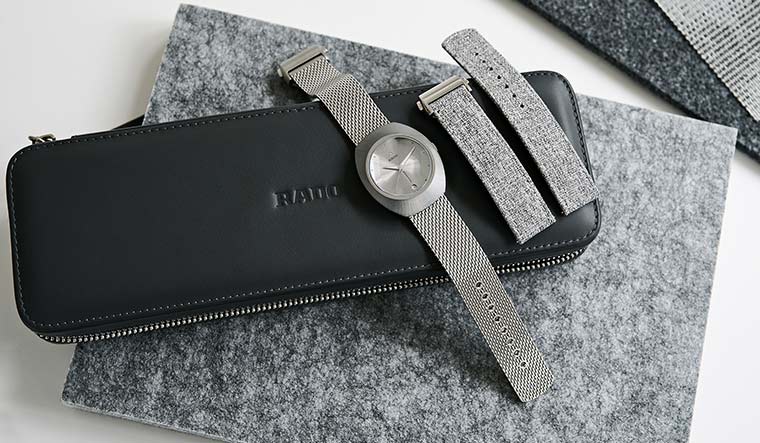In the world of luxury watches, there are few brands that have innovated with different materials as extensively as Rado. Often referred to as the Master of Materials, the Swiss watchmaker’s repertoire is filled with high-tech ceramic watches that are scratch-proof and incredibly durable.
Rado created the DiaStar 1, the world’s first scratch-proof watch, in 1962. It was made from an alloy of tungsten carbide called “Hardmetal”. It also had a sapphire crystal―almost as hard and durable as diamond―covering the dial. And its distinct oval shape made it stand out further. Unsurprisingly, the DiaStar 1 became immensely popular and has been in production for 60 years with essentially the same design.
So, to commemorate the 60th anniversary of the DiaStar 1, the brand released four watches in 2022 (now available in India). Updates were made to contemporise the DiaStar 1 via design and material. The sapphire crystal of the watches featured facets, and the case was crafted from steel and Ceramos, an innovative composite material with the hardness of ceramics and the lustre and resistance of metal alloy, again proving Rado’s expertise in material innovation.
 Alfredo Haberli
Alfredo Haberli
“If we can imagine it, we can make it. If we can make it, we will.” This was the vision of the founders of Rado. The DiaStar was made based on it. Together with the Centrix, the DiaStar is Rado’s most sold watch globally, says Adrian Bosshard, CEO, Rado. “Two years ago, when I joined Rado and I saw this product, understood its journey, I knew it was an icon of not only Rado but the watch industry as well,” he says.
To upgrade the design, Rado brought in Swiss-Argentinian product designer Alfredo Häberli, who created the DiaStar Original 60-Year Anniversary Edition, a monochromatic 38mm stainless steel watch with a radial-brushed Ceramos bezel with polished angles. Its sapphire crystal has hexagonal facets, each facet representing a decade of DiaStar’s history. There are green, lume dot hour markers, and a date window at six o’clock. Powering the watch is the Calibre R764 automatic movement with 80 hours of power reserve. The watch comes with two bracelet options―a “Milanese” bracelet and a mottled grey textile strap that are easily interchanged. The watch is delivered in a grey case, also designed by Häberli.
“I went back to the original and looked at it,” says Häberli. “For me, the proportions on the height were too much. Essentially, I changed the geometry. I wanted to reduce it to make it more elegant. I modernised the hands, and the dial opening has been changed and it has a brushed effect. The back is also more clean, sophisticated.”
The other three watches launched are the 38mm DiaStar Original, which continue the monochromatic theme, albeit in three dial versions―blue, dark grey, and green. Also crafted in stainless steel with a Ceramos bezel, their sapphire crystal features vertical facets. This coupled with the fact that the dial has vertical and horizontal brushed finishes ensures that the watches catch the light beautifully. Devoid of hour markers, the dial has a vertical day-date window at six o’clock. These watches are also powered by the Calibre R764 and are paired with polished, brushed H-link stainless steel bracelets with stainless steel clasps.


